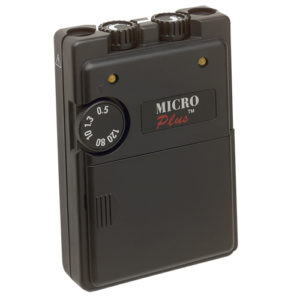Microcurrent
Understanding
Microcurrent
Introduction
Where TENS (Transcutaneous Electrical Nerve Stimulation) is used for the relief of pain, Microcurrent, because of its close proximity to our own body’s current, is thought to work on a more cellular level. Unlike traditional TENS units, MicroCurrent (MENS) output is at a lower level, and therefore the stimulation is often not “felt” or perceived by the patient.
It is theorized that healthy tissue is the result of direct flow of electrical current throughout our body. Electrical balance is disrupted when the body is injured at a particular site, causing the electrical current to change course. The use of Microcurrent over the injured site is thought to realign this flow, thus aid in tissue repair.
It has been found that ATP (Adenosine Triphosphate) in the cell helps promote protein synthesis and healing. The lack of ATP due to trauma of the tissue results in the decreased production of sodium and an increase in metabolic wastes, which is perceived as pain. The use of Microcurrent at an injured area helps realign the body’s electrical current, increase the production of ATP, resulting in increased healing and recovery, as well as blocking the pain that is perceived.
- What is MicroCurrent?
-
Introduction
Where TENS (Transcutaneous Electrical Nerve Stimulation) is used for the relief of pain, Microcurrent, because of its close proximity to our own body’s current, is thought to work on a more cellular level. Unlike traditional TENS units, MicroCurrent (MENS) output is at a lower level, and therefore the stimulation is often not “felt” or perceived by the patient.
It is theorized that healthy tissue is the result of direct flow of electrical current throughout our body. Electrical balance is disrupted when the body is injured at a particular site, causing the electrical current to change course. The use of Microcurrent over the injured site is thought to realign this flow, thus aid in tissue repair.
It has been found that ATP (Adenosine Triphosphate) in the cell helps promote protein synthesis and healing. The lack of ATP due to trauma of the tissue results in the decreased production of sodium and an increase in metabolic wastes, which is perceived as pain. The use of Microcurrent at an injured area helps realign the body’s electrical current, increase the production of ATP, resulting in increased healing and recovery, as well as blocking the pain that is perceived.
- MENS Products

